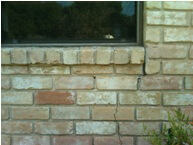
Swelling soils, also referred to as expansive soils, expand as they absorb water. The change in volume creates force that can lead to a cracked foundation and basement walls. This type of soil will also contract as it dries which can jeopardize the structural support of a home. Fissures also begin to develop allowing water to penetrate deep under the foundation during wet seasons.
Since these unforeseen foundation problems can cost thousands of dollars to fix and ultimately devalue a home if left untreated, understanding the risks and history of the property is crucial. Home buyers in regions where swelling soils are present need to identify if there has been significant soil heave in the past and determine the likelihood for soil heave in the future.
How to Spot a Problem with Swelling Soils
Fortunately there are precautions homeowners can take to help make an informed home buying decision. If you’re thinking about purchasing a home in an area that is notorious for swelling soils here’s where to start …
You can actually do an assessment before you even get to the property by studying the streets leading up to the home. Uneven, wavy streets serve as warning signs of heaving bedrock, while newer patches of asphalt could be masking the negative effects of swelling soils.
Once you’re at the home, the first place you want to take a look at is the driveway. If the concrete looks like it’s been through an earthquake – wavy and cracked – you’re probably dealing with an expansive soil problem. While wavy concrete is almost always a bad thing, a cracked driveway isn’t always so bad, just keep in mind that exposed cracks leave the underlying soils exposed to excess water which could damage the flatwork.
As you inspect the driveway pay close attention to the garage door. If it doesn’t shut completely – leaving a gap on the far right and left sides where the door meets the concrete – you could have a problem. Finally, learn to spot concrete repair work. If parts or all of the driveway have been replaced it may look nice, but it also indicates there has been structural movement in the past. This isn’t necessarily a bad thing, but you’ll want to make sure the concrete crack repairs were done by a reputable company and that the root of the problem has been addressed.
While you’re outside you’ll also want to examine the adjacent sidewalks and curbs. Small cracks in the concrete aren’t anything to overreact over, but severe ones can indicate the existence of swelling soils.
Finally, take some time to examine the patios and porches. Ideally, they should slope away from the house. This helps keep excess water away from the foundation. If the porch and/or patio slope towards the house then you’ve got an issue that will need to be addressed.
Next week we’ll continue the conversation by taking a look at ways to spot potential foundation problems by inspecting areas inside the home – like the basement.
